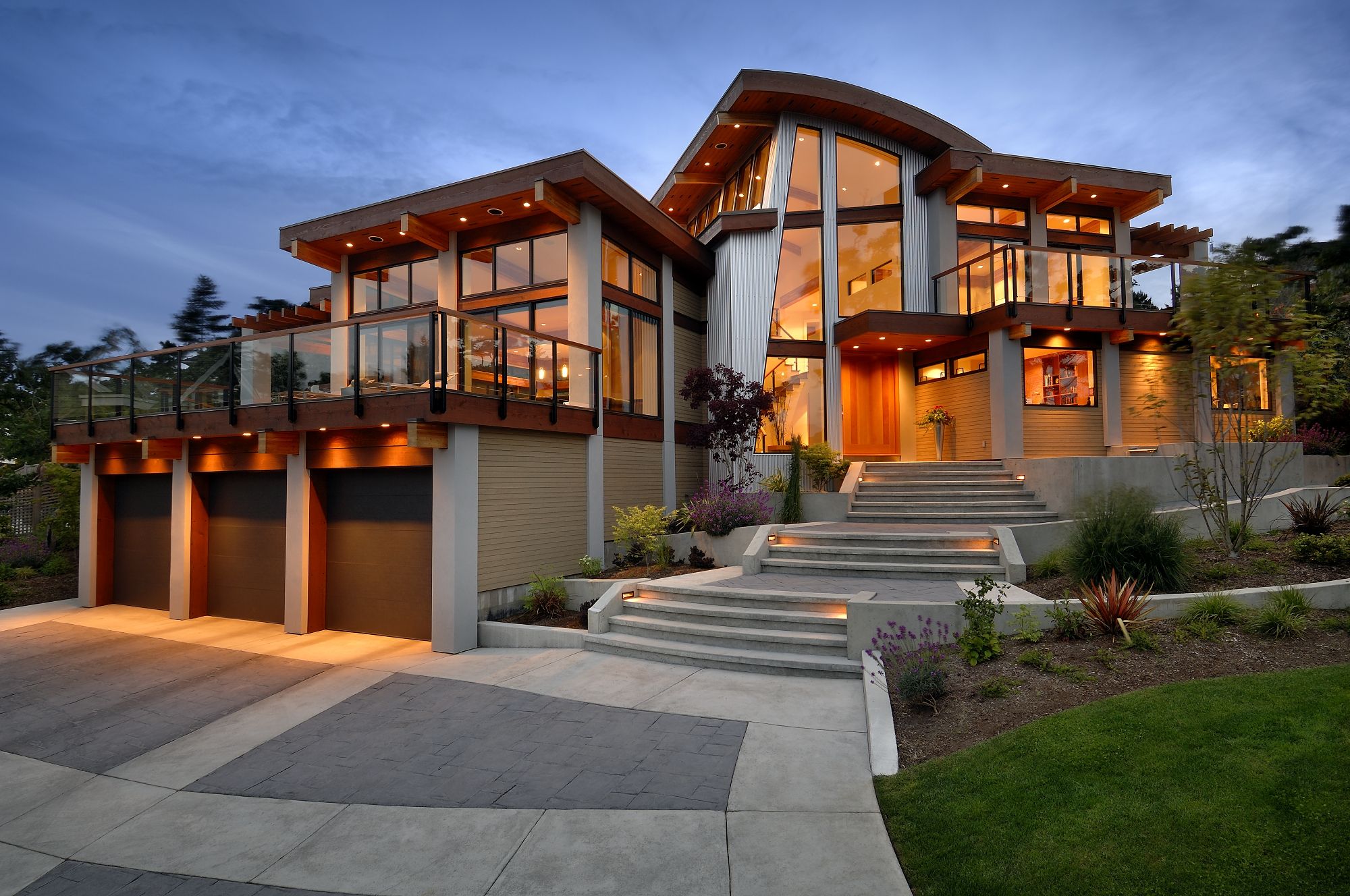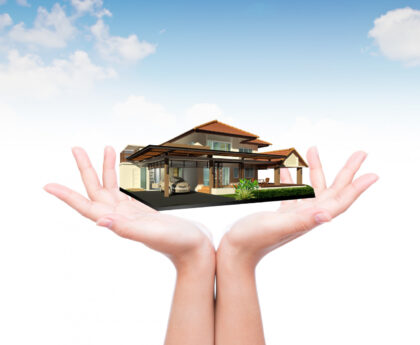The world of modern house construction is a dynamic and ever-evolving field. Syed Brothers make advancements in technology, materials, and design concepts, because contemporary homes are not only aesthetically appealing. But also more sustainable, efficient, and adaptable to the needs of homeowners. In this exploration of modern house construction, we’ll delve into innovative trends and techniques. They are shaping the way we build and live in our homes.
Sustainable Design and Green Building Practices
Sustainability is at the forefront of modern house construction. Architects and builders are increasingly incorporating eco-friendly design principles. And green building practices into their projects. Key trends include:
Passive Design:
Maximizing natural light and ventilation to reduce energy consumption.
Energy-Efficient Materials:
Using materials with high thermal resistance. Such as insulated concrete forms (ICFs) and structural insulated panels (SIPs).
Renewable Energy Integration:
Installing solar panels, wind turbines, and geothermal systems to generate clean energy.
Rainwater Harvesting and Greywater Recycling:
Collecting and reusing rainwater for landscaping and recycling greywater for non-potable uses.
Sustainable Landscaping:
Creating gardens that require minimal water and maintenance, and incorporating native plants for Pakistani home design.
Open and Flexible Floor Plans
Modern homes often feature open and flexible floor plans. That promote a sense of spaciousness and adaptability. Key elements include:
Multi-Functional Spaces:
Designing rooms that can serve multiple purposes. Such as a home office that doubles as a guest bedroom.
Seamless Indoor-Outdoor Living:
Incorporating large sliding glass doors and outdoor living areas for a smooth transition between inside and outside spaces.
Minimalist Design:
Streamlining interior design with clean lines, uncluttered spaces, and neutral color palettes.
Smart Home Technology
The integration of smart home technology has revolutionized modern house construction. Homeowners can now control lighting, HVAC systems, security, and entertainment systems remotely using smartphones and voice assistants. Key features include:
Home Automation:
Automating tasks like adjusting thermostat settings, locking doors, and turning off lights.
Energy Monitoring:
Real-time monitoring of energy consumption and the ability to optimize energy usage.
Security Systems:
Smart cameras, motion sensors, and doorbell cameras provide enhanced security.
Voice-Activated Assistants:
Voice-activated devices like Amazon’s Alexa and Google Assistant are becoming central to smart home control.
Modular and Prefabricated Construction
Modular and prefabricated construction methods are gaining popularity due to their efficiency and reduced construction time. Key advantages include:
Factory Precision:
Components are manufactured in a controlled factory environment, minimizing errors and waste.
Speed of Construction:
Shorter construction timelines compared to traditional building methods.
Cost Efficiency:
Sayeed brothers reduced labor and material costs can lead to more budget-friendly projects.
Energy-Efficient HVAC Systems
Heating, ventilation, and air conditioning (HVAC) systems in modern homes are designed for energy efficiency. And improved indoor air quality. Trends in HVAC include:
High-Efficiency Heat Pumps:
Replacing traditional heating and cooling systems with more efficient heat pumps.
Zoning:
Segmenting the house into different climate zones for precise temperature control.
Heat Recovery Ventilation (HRV):
HRV systems exchange stale indoor air with fresh outdoor air while retaining heat in the process.
Smart Thermostats:
Programmable thermostats that learn and adapt to occupants’ preferences.
Advanced Building Materials
Modern house construction benefits from the use of advanced building materials. That offer improved durability, energy efficiency, and aesthetic appeal. Key materials and trends include:
Insulated Concrete Forms (ICFs):
These blocks of insulation provide superior thermal performance and are often used for walls and foundations.
Structural Insulated Panels (SIPs):
Panels consisting of an insulating foam core sandwiched between two structural facings.
Energy-Efficient Windows:
Windows with low-emissivity coatings and multiple panes for enhanced insulation.
Sustainable Finishes:
The use of eco-friendly finishes like bamboo flooring, reclaimed wood, and recycled glass countertops.
Minimalistic and Contemporary Aesthetics
Modern house construction often embraces minimalistic and contemporary design aesthetics, characterized by:
Clean Lines:
Sharp angles, straight lines, and geometric shapes in architecture and interior design.
Large Windows:
Expansive windows to maximize natural light and provide panoramic views.
Industrial Elements:
Incorporating industrial materials such as steel, concrete, and glass in design.
Neutral Color Palettes:
Using neutral colors like white, gray, and earth tones for a sleek and timeless look.
Outdoor Living Spaces
Modern homes prioritize outdoor living spaces, creating extensions of the interior for relaxation, entertainment, and dining. Trends in outdoor living include:
Outdoor Kitchens:
Equipped with grills, sinks, and countertops for cooking and entertaining.
Fire Features:
Fire pits and fireplaces for warmth and ambiance.
Sustainable Landscaping:
Low-maintenance gardens and native plants that conserve water.
Aging in Place Design
As the population ages, modern house construction increasingly incorporates features. That allows homeowners to age in place comfortably. These features include:
Universal Design:
Creating homes that are accessible to people of all ages and abilities.
No-Step Entries:
Eliminating steps at entrances for easy wheelchair and walker access.
Wider Doorways and Hallways:
Providing ample space for mobility aids.
Lever-Style Door Handles and Faucets:
Easier to operate than traditional knobs.
Customization and Personalization
Modern house construction often allows for greater customization and personalization. That meet the unique needs and preferences of homeowners. This includes:
Custom-Built Homes:
Tailoring the design and layout to suit specific requirements.
Home Technology Integration:
Incorporating technology solutions that align with the homeowner’s lifestyle.
Sustainable Features:
Allowing homeowners to choose eco-friendly options that align with their values.
Modern house construction is a dynamic and innovative field. That incorporates sustainable practices, smart technology, efficient materials, and adaptable design to create homes. That meet the evolving needs and desires of homeowners. From eco-friendly features to sleek aesthetics and advanced building techniques, modern homes are designed to provide comfort, convenience, and sustainability for the future.
Owning a house is a significant responsibility and a rewarding experience. Whether you’re a first-time homeowner or have been living in your house for years. There are essential tips and practices that can help you maintain, improve, and enjoy your home to the fullest. In this guide, we have cover a wide range of tips for homeowners. To ensure your home remains a comfortable and valuable asset.
Regular Home Maintenance
Proactive maintenance is key to preventing costly repairs down the road. Establish a regular maintenance routine to keep your home in tip-top shape. This includes:
Inspecting the Roof: Check for damaged or missing shingles and have them repaired promptly.
Cleaning Gutters: Clear debris from gutters and downspouts to prevent water damage.
HVAC Maintenance: Schedule annual HVAC system inspections and replace filters regularly.
Plumbing Checks: Look for leaks, drips, or unusual noises, and address them promptly.
Sealing Windows and Doors: Check for drafts and seal gaps to improve energy efficiency.
Testing Smoke Detectors and Carbon Monoxide Alarms: Replace batteries and test these devices regularly.
Pest Control: Implement pest prevention measures and address infestations promptly.
Energy Efficiency
Reducing your pakistani house designs home’s energy consumption not only saves you money but also benefits the environment. Here’s how to enhance energy efficiency:
Upgrade Insulation: Ensure your home is well-insulated to minimize heat loss or gain.
Install Energy-Efficient Appliances: Replace old appliances with Energy Star-rated models.
LED Lighting: Replace incandescent bulbs with energy-efficient LED lighting.
Programmable Thermostats: Use smart thermostats to optimize heating and cooling schedules.
Seal Leaks: Seal gaps and cracks in walls, windows, and doors to prevent drafts.
Regular HVAC Maintenance: Keep your heating and cooling systems in top condition to improve efficiency.
Financial Responsibility
Managing your finances as a homeowner is crucial for long-term stability. Consider these financial tips:
Budget for Home Expenses: Allocate a portion of your budget for home maintenance, repairs, and emergencies.
Build an Emergency Fund: Save for unexpected home repairs or other financial emergencies.
Refinance if Beneficial: Explore refinancing options to secure a lower interest rate on your mortgage.
Understand Property Taxes: Be aware of your property tax obligations and budget accordingly.
Home Insurance: Regularly review your home insurance policy to ensure it provides adequate coverage.
Security and Safety
Ensuring the safety and security of your home and family should be a top priority. Follow these tips:
Home Security System: Consider installing a home security system with cameras and alarms.
Smart Locks: Use smart locks for added convenience and security.
Fire Safety: Maintain fire extinguishers and develop a fire escape plan for your family.
Carbon Monoxide Detectors: Ensure your home has functioning carbon monoxide detectors.
Secure Doors and Windows: Reinforce entry points with strong locks and deadbolts.
Outdoor Lighting: Install motion-activated lighting around your property.
Landscaping and Curb Appeal
The exterior of your home contributes significantly to its overall appeal and value. Keep your property well-maintained:
Landscaping: Maintain your lawn, trim bushes, and add seasonal flowers for curb appeal.
Tree Care: Prune trees and remove dead branches to prevent hazards.
Walkways and Driveways: Repair cracks and ensure pathways are safe and welcoming.
Exterior Paint: Consider repainting or touching up the exterior as needed.
Outdoor Living: Create inviting outdoor spaces for relaxation and entertainment.
Home Improvement Projects
Investing in home improvements can enhance your comfort and increase your home’s value. Prioritize projects based on your needs and budget:
Kitchen and Bathroom Upgrades: These areas have a significant impact on a home’s value.
Energy-Efficient Windows and Doors: Upgrade for improved insulation and aesthetics.
Finished Basements: Convert your basement into usable living space.
Deck or Patio: Create an outdoor gathering space for family and friends.
Painting and Flooring: Refresh interiors with new paint and flooring as needed.
Community Involvement
Getting involved in your community can enhance your overall homeowner experience:
Know Your Neighbors: Establish connections with your neighbors for support and safety.
Participate in Neighborhood Activities: Join neighborhood associations or attend community events.
Local Services: Familiarize yourself with local services such as schools, healthcare, and emergency resources.
Legal and Documentation
Stay organized and informed about the legal aspects of homeownership:
Homeowner’s Association (HOA): Understand the rules and regulations of your HOA if applicable.
Keep Important Documents: Maintain records of home improvements, warranties, and receipts.
Property Taxes: Stay up to date with property tax payments and assessments.
Legal Agreements: Review contracts and agreements carefully before signing.
Homeownership Education
Continuously educate yourself about homeownership to make informed decisions:
Homeownership Workshops: Attend workshops or seminars to learn about home buying and maintenance.
Stay Informed: Keep up with changes in real estate laws and regulations.
Homeowner Resources: Explore online resources, books, and magazines on homeownership topics.
Enjoy Your Home
Ultimately, your home should be a place of joy and relaxation. Take time to appreciate your home and create lasting memories with your family and friends.
Personalize Your Space: Decorate and arrange your home to reflect your personality and style.
Outdoor Activities: Make the most of your outdoor spaces for hobbies and relaxation.
Entertain: Host gatherings and enjoy quality time with loved ones.
Self-Care: Prioritize self-care by creating a peaceful and comfortable environment.
Remember that homeownership is a journey, and these tips can help you navigate it successfully. By taking a proactive approach to home maintenance, financial responsibility, safety, and enjoyment, you can create a fulfilling and comfortable living experience in your home.




